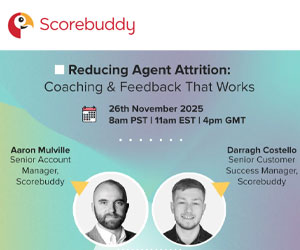We read a great article recently by Forbes on measurement where they were debunking the dogma that ‘If you can’t measure it you can’t manage it!’ They argue that the important stuff can’t be measured.
We sit somewhere in between with the thinking that you should of course continue to measure those traditional metrics (eg. average handling time) but customer expectations around service have escalated dramatically over recent years and so you really need to be investigating those softer metrics (eg. Did the agent attempt to build rapport with the customer?).
The Usual Productivity Metrics
Typically contact centres measure calls handled, average handle time or first contact resolution. In the case of a sales team, the number of sales closed is often tied to performance.
These are all justified and important to track. However, how do you REALLY know that you are providing a quality service?
You need to be able to dig deeper into your quality assessment to understand how your team are performing.
You also need to talk to the wider business about how each call should be measured. Operations will have a view on what’s important, the Marketing department will have another view, and so on.
The usual productivity metrics ARE important, we recommend that you localise your quality assessment. Take a step back and identify those metrics that will tell you about how your agents are performing for your organisation.
What SHOULD You be Measuring?
We learned from part 2 in this series that a good call should cover the following areas:
- The tone of voice used
- The importance of listening carefully
- The language that your agents use is very important
- Did the agent use effective questioning?
- Was the problem solved?
- Did the agent build rapport?
- Did the agent close the call/chat well?
When compared to traditional metrics, these areas are more difficult to measure as they require a much closer look at each agent, but this is a really worthwhile process and will tell you a lot more about both your customers and your agents.
If your team has a sales element to their calls (if the response from the customer dictates whether the call is deemed to be a good one or a bad one) it is important to remember that a poor performance from an agent can still result in a sale, whereas a great performance may not.
You need to understand ‘why’ you did or did not make that sale. Traditional metrics will not reflect this, you need to look more closely at the call.
We cannot control the result of each call. We can, however, control the standard of the service that we are providing each day. What you should be looking for is a consistently great performance from your team. Control the controllables.
Obviously we aren’t suggesting that you do away with the traditional metrics. Keep them! We do suggest, however, that you also measure the soft skills in the areas that we have outlined above.
What About Compliance?
Compliance and regulation are necessary evils, resulting in repetitive scripts and some restrictions on agent behaviour. Your QA tool should take account of compliance, tracking pass/fail rates, identifying consistent offenders and breach behaviours.
More importantly, breaches should be alerted to supervisors immediately to be addressed. Providing the regulator with a robust audit will reduce your risk profile.
Reporting
Ok, so this month was a good month. What if I asked you about last month? Or how does this month compare to the same time last year? If you are using spreadsheets to monitor the quality of your customer service, these questions are probably making you feel pretty uncomfortable right about now.
Keep All of the Data in One Place
If you are using spreadsheets to manage this process then you will probably be used to losing data sets. End-o–quarter or end-of-year meetings are often preceded by the stress of amalgamating the weekly/monthly reports.
It is really important that you keep all of your data in one place. You can successfully report on all of the data with ease. You will also be able to dig down into specific incidents with a couple of clicks. Try doing this with a spreadsheet!
Reporting to Management:
Reporting on KPIs can be an intricate affair, metrics from team to team, agent to agent, client to client. Again, spreadsheets are not equipped to handle this complex reporting.
A one-off report is an ordeal, repeat this ordeal every month and you have something that is unmanageable. Dashboard reporting is the answer.
You can see how this month compares to any other time period at the click of a button. One of our customers (that was using spreadsheets) has written a review of Scorebuddy where they claim that ‘Scorebuddy has given them their Mondays back’.
Your reporting needs to have this capability.
Reporting to the Agent:
Rarely do we see any mention of the agent being a part of the reporting loop. This is crazy! Agents are key stakeholders in the reporting.
Feedback about the performance of the team is really important, not just so that the agent will have an understanding of how their team is doing and how they can improve, but it’s critical for morale. Human Resources IQ have a great article on the importance of morale to staff.
We really understand the importance of engagement with agents, so much so that we have developed a module within Scorebuddy that enables supervisors and managers to engage with the agents, providing the agent with a report on their individual performance as well as being a platform for 1-to-1 communications between supervisor and agent.
The feedback from customers is that the agents really respond to this. It’s called Agent Insight – check it out!

Dick Bourke
Article written by Dick Bourke of Scorebuddy
Click here for Part 2 – Anatomy of a Good Call – Best practice… The Call
Author: Guest Author
Published On: 11th Jul 2016 - Last modified: 12th Aug 2025
Read more about - Expert Insights, Metrics, Scorebuddy





































